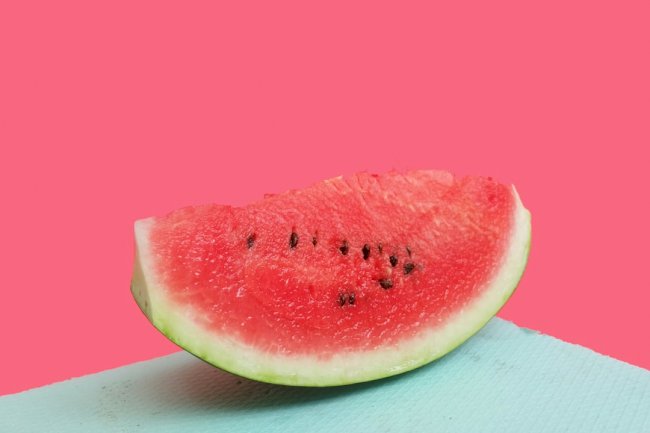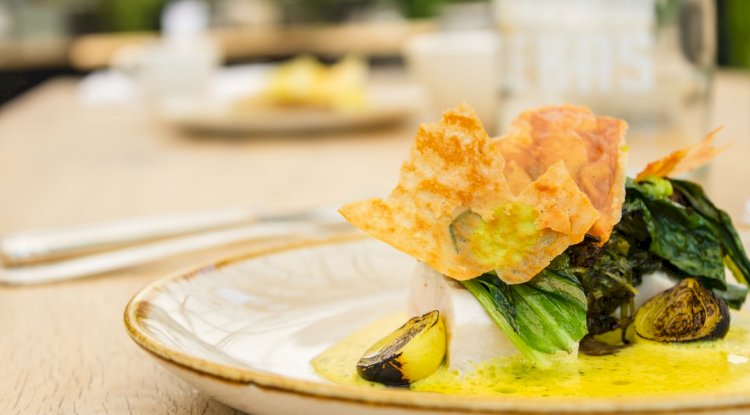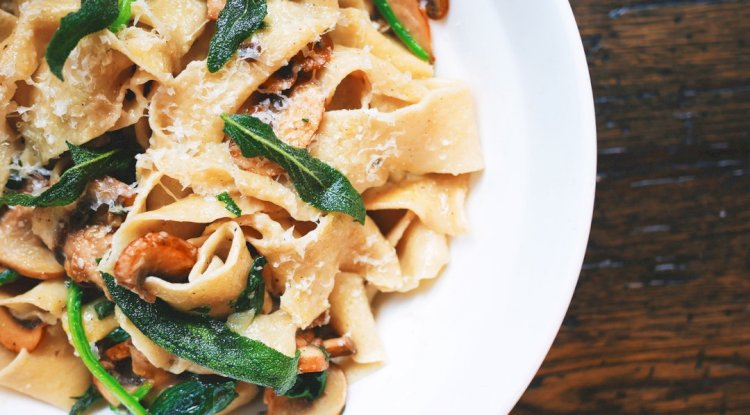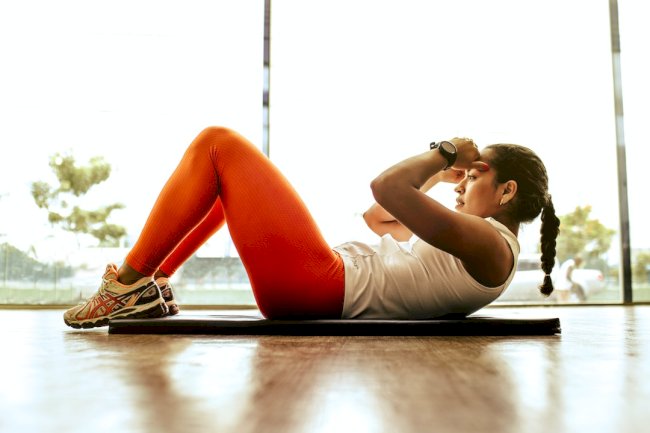Everything You Need to Know About Vegan Muscle Building
As veganism grows in popularity, the debate about vegan muscle building gets louder. Can you be strong on a plant-based diet? At one time they all said no, but times have changed. Now vegan athletes are changing the game worldwide showing us just how it’s done. Here’s everything you need to know about vegan muscle building…
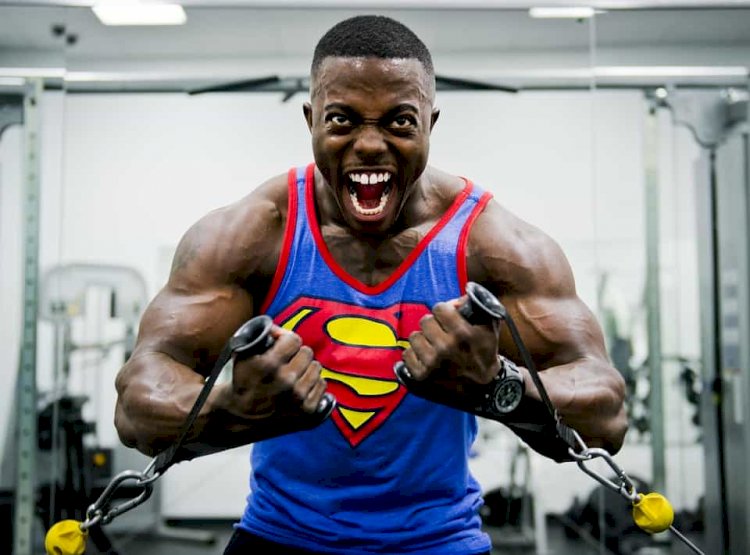
Building muscle as a vegan
Building muscle as a vegan doesn’t need to be any different than if you were a meat eater. The rules are still the same regardless of if you’re eating soy or steak.
Let’s be real here – nothing’s stopping you from becoming a lean, mean, green machine.
The only thing that changes is what and how you eat. Everything else, from your lifting sessions to sleep for recovery stays as is.
In order to build muscle, you really should have these three things locked in:
- Training
- Nutrition
- Recovery
Picture them a bit like a combustion triangle. You know, the one your grade six science teacher showed you in class.
She taught you that without each of the three necessary ingredients, you can’t start or sustain a fire. Growing and maintaining lean, flattering muscle is the same too.
You need your training, diet, and rest to be on point – or else you’ll not hit your full potential.
It’s true that you might build some muscle, but not nearly as healthily as you’d like. See it as a body balancing act.
How muscle building happens
Sports scientists say there are three steps to building muscle:
- Stimulus
- Molecular signaling
- Muscle protein synthesis
Step number one triggers the rest in a chain reaction. Creating a stimulus is the most fun part – resistance training. Okay, maybe eating tasty high-protein vegan snacks is up there too.
We’ll break these steps down even further for the girls at the back.
Stimulus
As you’ve probably guessed, the stimulus is something that kickstarts the process. To get scientific about things though, it’s a primary mechanism to stimulate muscle growth.
This stimulus can either be:
- Mechanical tension
- Metabolic stress
- Muscle damage
Single muscle fibers can detect these conditions, which leads them to stimulate molecular signaling.
How do you create them in the first place? By putting resistance against your muscles – aka strength training.
Molecular signaling and muscle protein synthesis
When you smash a strength workout, a whole host of signaling pathways are activated.
Some of these then influence protein synthesis…
Protein synthesis responds by becoming elevated – eventually creating a build-up of protein inside muscle fibers.
Now, protein synthesis is a very important process for building muscle [1].
Your body is in a constant battle between protein synthesis and protein breakdown. Protein synthesis builds new muscle proteins. Protein breakdown, well, it does exactly as the name suggests and breaks them down.
If protein synthesis overtakes breakdown, you’re able to build more muscle.
So, while it’s without a doubt vital you eat enough protein, it’s important to signal protein synthesis in the first place. Say hello to your stimulating friend – strength training.
(Wow, that’s actually a lot of protein action going on. Sorry, it just had to be done.)
So, let’s get lifting and rep out on how to train for vegan muscle building.
[Related article: Strength Training Exercises That Will Transform Your Physique]
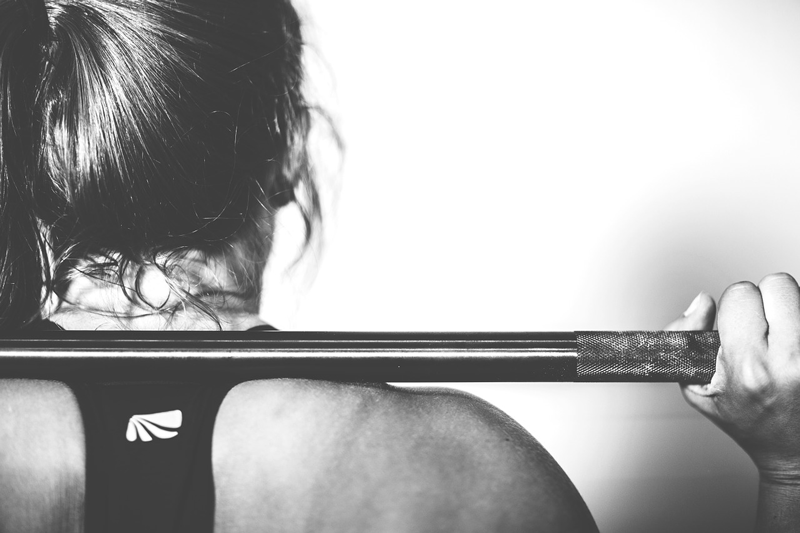
Training for vegan muscle building
Adding lean muscle mass to your frame is a job for resistance training. Whether you’re just looking to shape up or become a vegan bodybuilding sensation, the weight room is your best friend [2].
Even if you’re not a vegan, resistance training has amazing benefits for women. It brings out all the right shapes in all the right places and makes us stronger. For some reason, there’s a myth it makes us… bulky?
Nope. Far from the truth. It’s an empowering way for us to sculpt a strong feminine physique. Picking up weights or moving your body against gravity helps you shape-up, just how you like.
The science behind sculpting a strong and feminine physique
As you now know, lifting weights provides a stimulus to trigger protein synthesis. Your body gets the message it needs to grow back stronger.
It’s also well known that to keep creating a stimulus, you need to use progressive overload [3]. There’s no discrimination between meat eaters and vegans here…
Just plain old science! Oh, and some hard work for sure.
[Related article: A Girls Guide to Muscle Hypertrophy – Building Shape and Size]
How to work out as a vegan
When training to build muscle it’s all about getting the most bang for your buck. One-way women can do this is by using compound lifts, as they recruit the most amount of muscle fibers [4].
Current research says you should shoot for 6-20 sets per muscle group a week. It’s then down to you to divide these up into single sessions. If you’re a beginner, you might only need the six, or if you’re advanced close to 20 [5].
- Beginner: 6-20 sets
- Intermediate: 10-20 sets
You also don’t need to go heavy if you don’t want to. It’s all about hitting enough volume that you challenge your body.
So, rather than just add weight, you could increase reps, intensity, or shorten your rest times. Progressive overload is actually simple to accomplish.
Want to grip and rip a heavier barbell instead? Go ahead, girl! We’re fully behind you.
How to create progressive overload:
- Add weight, reps, and/or sets
- Work out more
- Shorten rest
- Increase intensity
Do vegans need to train differently?
Vegans don’t need to train differently than anybody else.
We repeat – no you don’t!
If you’re plant-based, you can still follow the same strength routine as omni athletes. As long as your other two factors are locked down, you can go get those vegainz, girl.
Some girls go for an upper-lower approach, that’s fine. Others like plant-based IFBB pro Jehina Malik likes a stereotypical bodybuilding split, which is cool too.
For you though, we’ll show you our favorite.
Here is an example push-pull-legs workout split that’ll turn you into a hench her-bivore. This is a three-day routine guaranteed to build real vegainz for women.

Credit – @naturallystefanie
While the PPL is big among men, inspirational vegan women like Naturally Stefanie use them too. It’s easy to fit into your week and you can even hit the whole thing twice if you like. Beginners should separate each workout by a rest day, while pros can mix it up how they like.
Let’s do this.
Vegan muscle building PPL split
Day 1 – Push
- Bench press – 4 x 10
- Dumbbell push press – 3 x 12
- Chest adductor machine – 3 x 12
- Cable push-downs – 3 x 12
- Kneeling pallof press – 2 x 12+12
Day 2 – Pull
- Deadlift – 3 x 10
- Chin-up (assisted if necessary) – 3 x 10
- Bent over kettlebell rows – 3 x 12+12
- Seated cable row – 3 x 12
- Lat pull-down 3 x 12
Day 3 – Legs
- Back squat – 4 x 10
- Knee extensions – 3 x 10+10
- Dumbbell lunge – 3 x 10+10
- Kettlebell lateral lunge – 3 x 10+10
- Dumbbell Romanian deadlift – 3 x 12
A little something else to help your vegainz
We’ll keep this short and sweet, but it’ll help massively with your workouts and recovery. Before working out make sure to warm up well and hit some muscle activation exercises.
Also, make some valuable you time for mobility. Love and respect your body by stretching post-workout or even hitting a mobility workout separately.
Get to know the foam roller and massage ball because they’ll be your best friend. Believe us, it’s all essential.
Hell, why not channel your inner Zen and try some yoga? Some scientists say it could even help you make gainz by improving mobility, flexibility, and balance.
The first rule of building vegan muscle is to stay in the game. Activation and mobility exercises help keep those injuries out of your life for good.
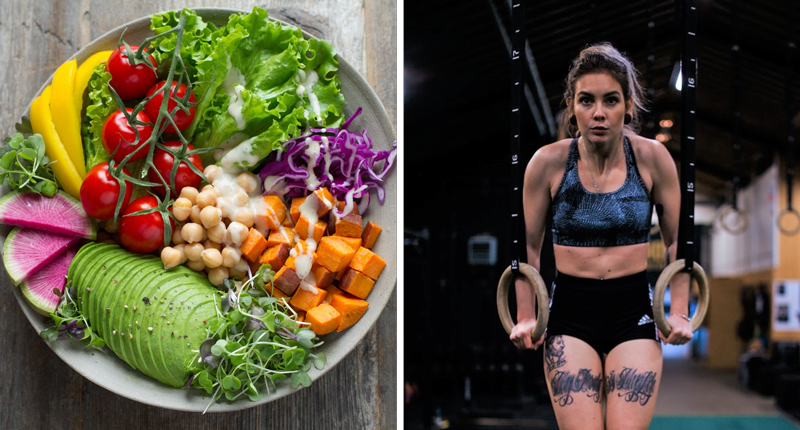 Vegan nutrition for muscle building
Vegan nutrition for muscle building
A vegan diet is unique in the way that it abstains from all animal ingredients. So, understandably, everyone has a notebook full of questions when we walk into the room.
But we’re not here for them, we’re here for you. Here are seven steps to dialing in your nutrition and build a broccoli boosted physique…
1. Work out how many calories to eat
Back in the day, they used to say it’s all about eating a ton to get big muscles. Today though, we’re a little more educated. You actually have a certain number of calories you should be eating. Eat enough calories and should grow muscle much faster.
Deciding to eat under or over this amount can and will impact your results. Hit the sweet spot, well, you can grow muscle and stay lean. Double-win, right?
What you need to do is find your total daily energy expenditure (TDEE). This is a close estimate to the number of calories your body burns in a day.
Now, if you eat enough protein you should still build muscle here. But if you increase your intake by around 10-20%, you’ll grow faster. In gym-speak, this is called a ‘lean bulk’.
Dirty bulks are fun for a while, but clean bulks keep us looking our best. Always choose the latter.
Finding your TDEE
To find out a close estimate of your TDEE we’ll use the following equation:
First, find out your BMR – this is the number of calories you burn at rest…
BMR = (height in cm x 6.25) + (weight in kg x 9.99) – (age x 4.92) – 161.
Next, to find out your TDEE you’ll multiply BMR by your activity level…
- Sedentary – none or very-little exercise = x1.1
- Lightly active – (sports 1-3x a week, light training) = x 1.275
- Moderately active – (sports 3-5x a week, moderate training) = x1.35
- Very active – (sports 6-7x a week, hard training) = x1.525
Here’s an example for you to follow for a 23 y/o woman who is five foot six. Her current weight is around 63 kilograms.
BMR = (165.1 x 6.25) + (63 x 9.99) – (23 x 4.92) – 161
BMR = 1,031.86 + 629.37 – 113.16 – 161
BMR = 1,387.07
We also know that she likes to hit the gym five times a week. So, as a moderately active gal, we’ll ‘x’ her BMR by 1.35 to find her TDEE.
TDEE = 1,387.07 x 1.35
TDEE = 1,873 kcal
Want an easier way than wading through the math? Download the MyFitnessPal app to your phone and try that instead.
2. Understand your vegan protein
If you’ve been vegan for longer than an hour you know about protein. Well, you kind of have to when you’re asked about it every day…
And seems as you’re not stuck on a desert island, it’s not hard to get enough. Plant-based protein sources are found in abundance all over the world, from fake meats to wholesome beans.
Did you know that the Beyond Meat burger actually has more protein per bite than a standard beef patty? How about the fact that tofu contains all nine essential amino acids? Throw these stats at snotty gym-bros and see them squirm, girl.
Okay, back to business.
Best vegan protein sources
We’d say try to stick to whole food proteins if you can. Although if you like your tofurkey, save it for one meal per day. Beans and pulses just provide that closer-to-nature goodness and fiber.
Tempeh is a great place to meet in the middle because it’s simply fermented soybeans. Marinade in your favorite herbs and spices before pan frying in coconut oil. Delicious and nutritious as soy protein contains every essential amino acid.
[Related article: 17 Vegan Foods That Have the Highest Protein Content]
One thing to remember is it’s a smart move to combine protein sources.
Not all plant-based protein contains every EAAs, so, mix ‘em up. Throw chickpeas together with brown rice, or spicy haricot beans on toasted wheat bread. Our number one combo is always going to be peanut butter in our morning oats.
For a little inspiration, check out this mouthwatering meal from vegan powerlifting champ Sophia Ellis…

Credit – @sinfreesophia
3. Get enough protein
All joking aside it’s important you get enough protein. Recommended daily values are mainly intended to suit sedentary women, not strength training Sheila’s like ourselves.
We need a whole other level of nutrition.
Introducing the International Society of Sports Nutrition. These guys know a thing or two about feeding athletes, especially on the protein front.
According to their latest research us women who lift should eat protein at around 1.4 – 2.0 g/kg of bodyweight every day [6]. However, if you want a little extra, one gram of protein per pound of bodyweight is popular among vegan bodybuilders too.
How do to hit your target amount
Now, that’s pretty doable, right? You could do this entirely on whole foods alone too. However, if you’re looking for convenience, try a plant protein drink. Due to the surge in veganism, many companies offer plant-based options.
At SMG we’re always impartial. So, we’ll be blunt and say that vegans are sometimes advised to eat more protein than they think they need. This is down to our high-fiber diet, which can occasionally obstruct absorption.
Depending on convenience you should shoot to split your intake up at 2 – 4 hours too [6]. The ISSN say that doing so helps our bodies build muscle and repair better, as well as optimizing protein absorption. There’s also an upper limit of how much we absorb in one go, which is another reason to separate your portions.
4. Mix your macros for muscle building
To build muscle efficiently you’re best to balance your macros. That means eating plenty of carbohydrates and fats, without cutting out food groups.
Carbohydrates can help you build muscle
Besides just being tasty, carbohydrates help you build muscle. Plus, your body prefers to use carbs for energy, so stocking up your stores can supercharge a workout.
Ever tried to hit a heavy set while carb depleted? Not fun.
When choosing which carbs to eat try to keep complex ones as your go-tos. Eat them as part of your main meals or two-hours before a workout.
For example; you could enjoy a bowl of creamy oatmeal for breakfast, followed by brown rice, broccoli and baked tofu for lunch. Before our workouts, we love getting generous with the peanut butter on crunchy wholewheat toasted bread. Damn, now we’re hungry again girl.
However, if you need a boost close to a workout, you can eat something simpler like rice cakes, white rice, or dates. These carbs can be broken down quicker and prove almost instant energy.
A handful of nuts and dates never goes amiss before a rushed 7 am session. Not when they’re paired with a double-espresso anyways.
Fats for vegans
Speaking of nuts, what about fats? For some reason, people are scared of fats. But the truth is they’re just as vital as carbs for your health.
This is even truer when we think about vegan muscle building. Because fats don’t just give us energy and protect our organs, but they’re a source of essential omegas.
Omega-3, also known as polyunsaturated fatty acids, are super important when it comes to building muscle. Meat eaters usually get theirs from fish, but us plant-based lifters look elsewhere.
Instead, we can grab a handful of walnuts! When we take in fatty acids in the form of ALA from walnuts, we can convert it to EPA and DHA just like salmon. So, we can skip the eating fish part out entirely.
It doesn’t just stop at walnuts, though. Flax seeds, chia seeds, Brussels sprouts, plant oil, wild ride, fortified vegan milk, and algae oil all boast plant-based omega-3s too.
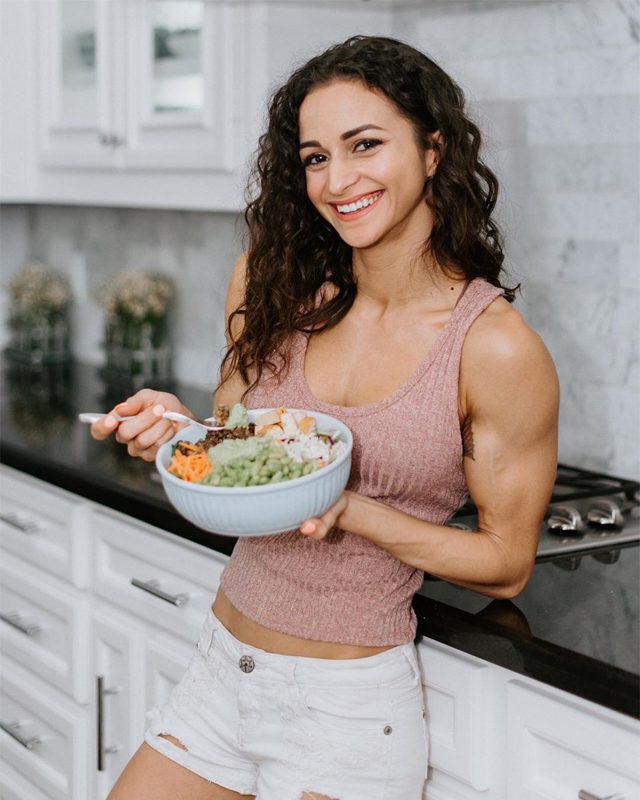
IFBB PRO & chef Natalie Matthews aka @fitveganchef eating a nutritious micronutrient filled meal
Credit – @fitveganchef
5. Micronutrients and vegan muscle building
Macronutrients are pretty easy to spot and keep track of. Yet, a lot of the magic happens due to micronutrients. These are a mix of vitamins and minerals your body needs to perform at it’s best.
As a vegan, your richest source of micros is wholefoods. Fruits and vegetables particularly are filled root to leaf with vitamins and minerals. Broccoli, for example, is a great source of vitamin K and iron. Portobello mushrooms are the underground queens of vitamin D.
Your mission is to fill your plate with plenty of natural products. Eat your greens and don’t forget the fruit. Enrich your body with mother nature and bag a whole host of micros. And just a tip, cook your veggies until they’re still crunchy to stop nutrients escaping.
According to a study on Swiss vegans, nutritional scientists say plant-based people don’t need to be deficient in any micronutrient. If they’re smart and keep their diet well balanced and supported by supplements, they can get all the right micros [7].
6. Vegan supplements for building muscle
It’s true that you don’t necessarily need supplements to build muscle. But certain ones out there are proven to help the process.
Supplements are designed to enhance your diet. Not only that, but they can help fill in the gaps you might be missing.
Protein powders and bars
Neither protein powders nor bars are absolutely vital. Yet they’re super convenient for dialing up your daily amino intake. Many athletes and vegan bodybuilders use them between meals when they might not feel like eating much.
When looking for a protein powder always think about amino acids. Are there all the essential ones in your choice? Soy protein does and blends should too.
Also, does your powder or bar contain ingredients you’re allergic to? It’s best to check before you go and buy a big tub of the stuff. Not that we’ve ever made that mistake…
Bottom line – check the label and align it with your goals, macros, and meal planning.
Creatine
As a vegan, your creatine intake through plant foods is going to be limited. So, we strongly advise you to put Cr at the top of your shopping list.
Creatine is hands down the most studied supplement on the planet. It’s proven to benefit building muscle, improve in strength, boost endurance, and help brain health [8].
Not only that, but creatine can make your physique pop. It helps to accentuate the muscle you already have by making them fuller.
There’s no reason why vegans shouldn’t supplement with creatine. Unless you’re a non-responder, the benefits stack up overwhelmingly against the cons. Try a small serving first and take consecutively every day for the best results.
B12
Another key supplement is vitamin B12. Meat eaters get this from their diet because a lot of animals pick it up through the soil, but we don’t. And deficiencies in B12 can lead to anemia and central nervous system damage.
So, to stay safe, make sure you’re getting enough. Look for B12 as a standalone supplement or as part of a multivitamin if it’s not added to your foods.
Other essential supplements for vegans
- Vitamin D complex
- Iodine
- Iron
- Zinc
- Magnesium
- Calcium
- Vitamin B6
- Long-Chain Omega-3s
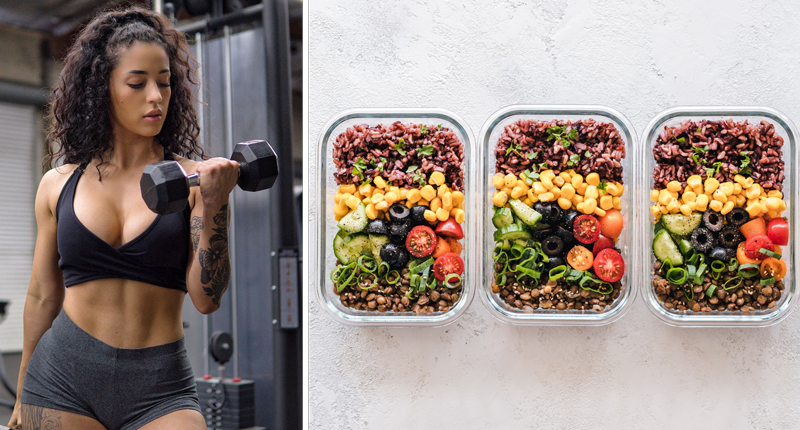
Athlete – Vegan personal trainer and fitness model @biancataylor
Last lift on vegan muscle building
Vegan muscle building is becoming big business. Literally, ladies everywhere are creating the bodies they desire on a plant-based diet. Yes, it’s possible, and we’re showing the world how.
All you have to do is align your diet and training to your goals. Believe in the process of lifting weights and let it flatter your physique. Next, nail your nutrition by following the steps we’ve given you above.
A big part of vegan muscle building is getting everything spot on. Your recovery is just as important as your training, so set time aside for yourself. Rest well between workouts and practice your mobility. Don’t forget to nourish your body post-workout too to replace and restore all those vital nutrients.
Good luck out there, girl. Be strong, be powerful, and commit to the process – you’ve got this.
More muscle building insights for ladies who lift:
- 10 Best Vegan Bodybuilders to Follow On Instagram
- Essential Lifts Every Woman Should Know
- Girls Who Lift – Bigger Butt Workout
- Beginner Powerlifting Program for Women
Source: spotmegirl.com
What's Your Reaction?








